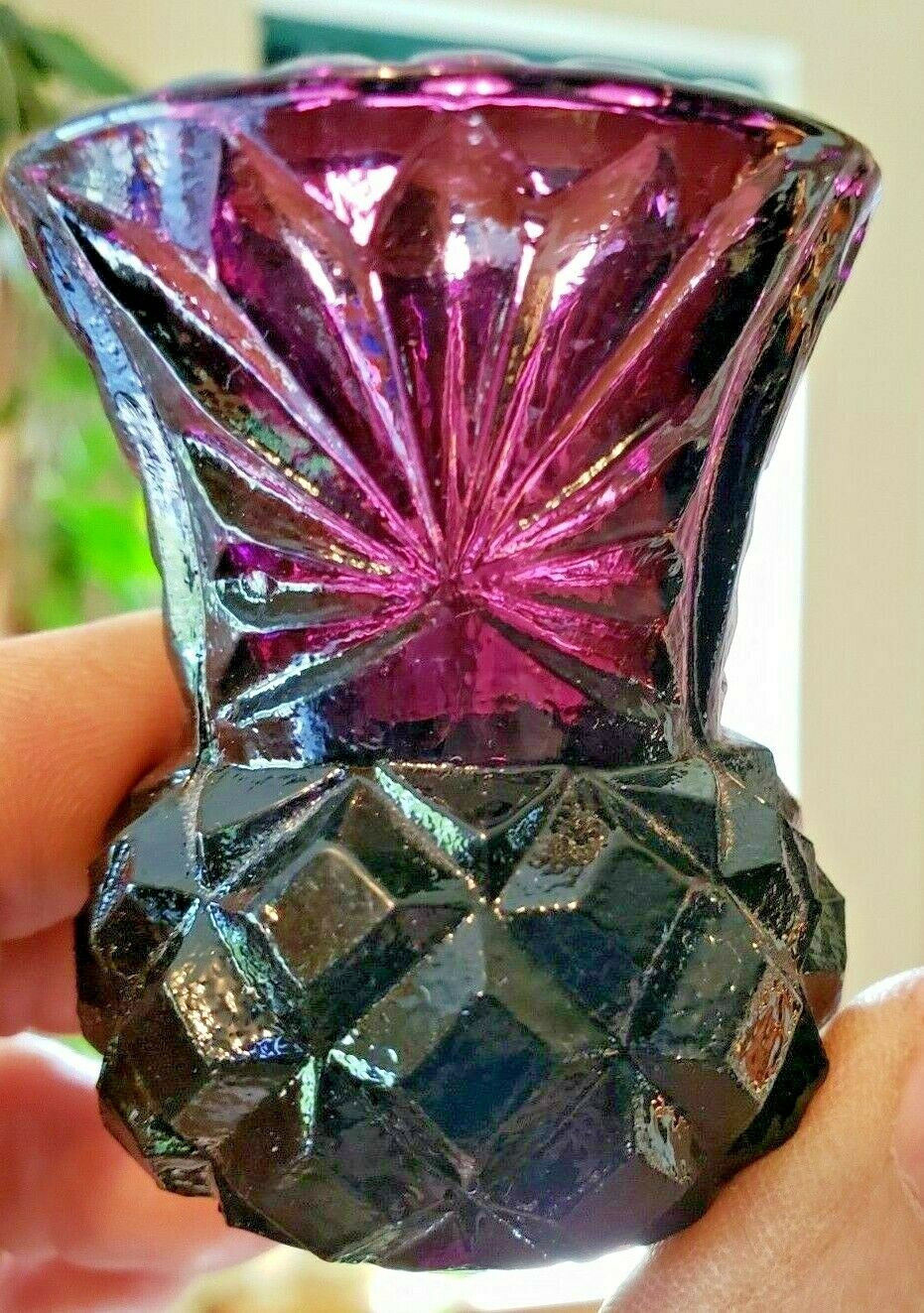-40%
Rare Vintage Fenton Green (Stippled Rays) 3 in1 Ruffled Edge Carnival Glass Bowl
$ 11.88
- Description
- Size Guide
Description
Here is a Rare Vintage Fenton Green 1909-22 (Stippled Rays) 3 in1 Ruffled Edge Carnival Glass Bowl. This bowl is 3" tall or high by 9 1/4" across the top outside rim by 8 1/4" across the top upper ruffle outside rim by 3 1/3" across the base. This pattern is quite simple of alternating plain and stippled rays right to the center. This vintage bowl is Pre-owned by Me, I have been collecting Carnival Glass for over 45 years and in the near future my collection of over 650 plus pieces will be coming up for Auction. This Bowl is in Fantastic condition and has Brilliant color with NO Chips, Cracks except One Flea Bites.Your item will be sent Priority Mail this way because I can Insure the Item. In the past items sent out in First Class mail got lost or were tampered with at the Post Office.
Payment is due within 7 days after the auction ends. I prefer PayPal. I will combine shipping if you purchase multiple items from me. Everything I sell comes from a Smoke-Free Home.
In the event the item is not what you expected or you are dissatisfied with it, you will have 60-Days buyer-Paid returns and you will be refunded the purchase price plus original postage.
When sending the item out, if I can make it cheaper then the quoted price I will just refund you the difference to your PayPal account as I have done in the past!
On Jul-05-21 at 06:13:30 PDT, seller added the following information:
I had a question about the line in the middle (center) is it scratched and that it was a Straw Mark. Here is a better way to explain it:
Carnival Glass collecting has its “urban myths” just like everything else – take the story behind the (incorrectly used) term “straw mark” for example.
Sometimes, when you look look at a piece of glass, you can see a short, straight mark, about an inch long, on the surface of their glass. These marks are much more visible and obvious on Carnival Glass, as the iridescent surface emphasises their appearance, especially if they occur in a plain section of the design.
At first sight the mark may cause alarm, and they can be a little unsightly. Could it be a crack? No - but what caused it?
The correct name for the mark is a
shear mark
, which indicates clearly what made it
.
Glassmakers used shears to cut off the gather of molten glass as it was being dropped into the mould ready to be pressed - see below left. Because the blades of the shears were relatively cool, the act of cutting the very hot glass resulted in a fractional cooling and resultant hardening of the surface of the glass where it was cut. This is the
shear mark
- seen in close-up, below centre - which is most obvious where the design has large plain, pattern-free areas.
With skill on behalf of the presser, the shear mark could be hidden - either within the intricacies of the pattern, or by expert "flipping" of the gob of molten glass so the shear mark was not on the surface. The mark could also be removed by re-heating the pressed item and "fire-polishing" the mark out.
However, judging by the number of shear marks that are visible on Carnival Glass pieces, this was not always done, whether it was down to lack of skill, time or the lack of quality control



















